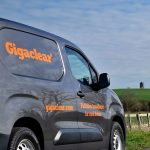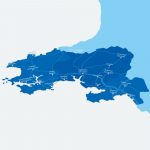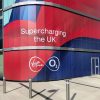Over 50 Cross Party UK MPs Call for Better Rural 4G Mobile Coverage
More than 50 MPs have signed a letter by the All-Party Parliamentary Group (APPG) on Rural Services that calls on the government’s digital secretary, Matt Hancock, to ensure that 95% of the UK’s landmass can access a mobile service from all operators (Three UK, Vodafone, EE and O2) by the end of 2022.
At present EE (BT) already claims to have reached a geographic coverage level with their 4G network of 90% and they aim to cover 95% by the end of December 2020. Unfortunately Ofcom recently reported that this figure drops to just 57% when looking at coverage delivered in the same areas by all four mobile operators (here).
The letter asks Hancock to ensure that a legally binding coverage obligation is placed on all four major operators and to rethink Ofcom’s statutory obligations in order clarify that its main purpose must be to work towards the delivery of universal quality mobile coverage.
Advertisement
On top of that the MPs also want a significant change in the rules on transparency in order to prevent mobile operators from hiding behind “commercial confidentiality” and refusing to tell communities about their deployment plans.
Julian Sturdy MP, Chair of the APPG, said:
“Ofcom’s Connected Nations report in December 2017 revealed that while people inside 90% of UK premises can make telephone calls on all four mobile networks, this falls to 57% in rural areas. This is just not good enough and progress in connecting the countryside has been painfully slow.
We are asking the Secretary of State to step in and work with Ofcom to ensure that the mobile operators speed up delivery of 4G to rural areas.”
Mark Bridgeman, CLA Deputy President, said:
“People living and working in the countryside are fed up with rubbish signal and empty promises from the mobile network providers. Ofcom must take a stronger line.
They can do this by requiring legally binding targets that will deliver on the government’s stated ambition of 95% geographic coverage by the end of 2022, and robustly challenge the industry’s constant excuses for not investing in rural areas.”
However it’s worth pointing out that the 95% target is already part of the current government’s manifesto (here) and Ofcom plans to attach a stricter coverage obligation when they come to auction off the highly prized 700MHz band in late 2019 (details). The lower frequency is ideal for covering a wide area, as well as reaching further indoors, and would be a good complement for the existing 800MHz and 900MHz bands in rural areas.
Similarly part of the reason why EE is so far ahead is due to all the new masts and other infrastructure that is being built as part of their £1.2bn Emergency Services Network (ESN), which should connect 300,000 UK emergency services personnel with 4G voices and data services across Britain. The good news is that Vodafone, Three UK and O2 will also be able to make use of masts built via the ESN to help boost their own coverage.
Suffice to say that there’s already a very strong likelihood that the 95% target will be, although that’s still several years away. Another question is over whether or not the improved coverage is something that people will notice, particularly as the official figures don’t always seem to reflect actual end-user experiences on the ground. Mobile coverage is notoriously difficult to pin down.
Advertisement
Mark is a professional technology writer, IT consultant and computer engineer from Dorset (England), he also founded ISPreview in 1999 and enjoys analysing the latest telecoms and broadband developments. Find me on X (Twitter), Mastodon, Facebook, BlueSky, Threads.net and Linkedin.
« ISP B4B Networks Plan FTTP Broadband Rollout in N.Ireland UPDATE

















































Comments are closed